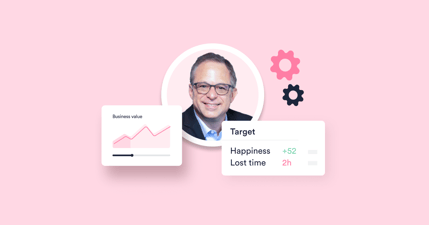The concept of experience management might seem “fluffy” to some, especially those schooled in technology. But, as with the growth in importance of customer experience (CX) management that started over a decade ago, employee or end-user experience management (and improvement) can help organizations reduce costs and improve revenues – and thus the bottom line.
To help, this article explains how organizations can drive continual improvement – that positively impacts the corporate bottom line – by looking at the end-user experience through a productivity-based lens. Calling out data points and customer success story examples along the way.
Avoiding suboptimal decision making
IT organizations are not alone in making decisions that, while good for them, are harmful to the business as a whole. Such suboptimal decision-making can happen anywhere in the organization – where a particular decision is taken with the best of intentions, usually to save operational costs. But the unseen adverse business-level impact might far outweigh the business-function savings. It’s a known but often overlooked shadow cast over continual improvement efforts.
For example, an IT service desk might want to move end users from the telephone to the self-service channel such that tickets are “deflected,” and the IT organization saves 8-10 minutes for each ticket deflected. It all looks great for the IT service desk, in cost and workload terms, but the business-level picture might differ. But would your organization know?
Using experience data to understand the current issues and costs of IT self-service
There have long been concerns that a highly-paid business executive using self-service to solve their issue might be costing the business more than if they called the IT service desk. But what if this is true no matter the hierarchical position of the end-user?
While self-service has been touted as a “better, faster, cheaper” IT support channel for over a decade, there have been issues with its successful adoption – with this usually evidenced through lower-than-expected employee adoption levels. But what about the impact on the employees using it (either through choice or a corporate “mandate”)?
This issue is one of the many bottom-line-affecting insights that experience data provides – that, despite the promise of better and faster support experiences, self-service capabilities are often inferior to traditional service and support channels such as telephone. Importantly, this is not self-service per se, but how the capability has been and continues to be delivered.
The table below shows how the level of employee lost productivity differs by IT support channel – that, on average, employees lose 78% more productivity when using the corporate IT self-service portal rather than the telephone channel. These differences are mirrored when the level of end-user happiness with each channel is measured too. Plus, here, it’s important to note that this data is for HappySignals customers – that have already invested in identifying and addressing experience-related issues – rather than IT service providers per se.

Source: HappySignals, The Global IT Experience Benchmark H2/2021
So, building on the example above, this aggregated experience data shows that, while the IT organization might have saved 8-10 minutes and the associated staff costs (thanks to self-service use), the end-user or business-level impact is far more significant, with an additional 101 minutes of employee lost productivity.
Importantly, without the insight obtained from experience data, this productivity loss and the associated impact on the corporate bottom line go unnoticed. Once such issues are appreciated, organizations can leverage experience data to assess the status quo, identify productivity-related problems, and drive improvements that positively impact the end-user experience plus the corporate bottom line.
Experience-data-based improvement in action
In 2018, multinational consumer goods company Reckitt wanted to transform its IT operations to deliver a “best-in-class” service experience for employees. To get an accurate picture of the existing user experience, and actionable data, the company brought in HappySignals.
From starting its experience management journey in January 2019 to December 2020, Reckitt saw a 51% increase in employee happiness with IT services and an increase in feedback responses from just 4% to 25%. It also saved an average of 51 minutes of lost time per ticket for its end users. For an organization with 300,000 tickets annually, it’s over 250,000 hours of employee lost productivity saved per annum – a significant improvement to the corporate bottom line.
Additionally, the IT organization now operates with a better level of transparency that has helped its teams to build better relationships with the rest of the business. It allows them to continue their improvement journey – to drive better satisfaction for its end-users by listening, understanding, and making the adjustments that address the issues that matter most to end-users based on the HappySignals analysis. This journey is ultimately improving IT operations and business outcomes, including the health of the corporate bottom line.
If you’d like to learn more about how your organization can use experience data to improve its bottom line, please see our latest on-demand webinar: Global IT Experience Benchmark - Key Findings.





